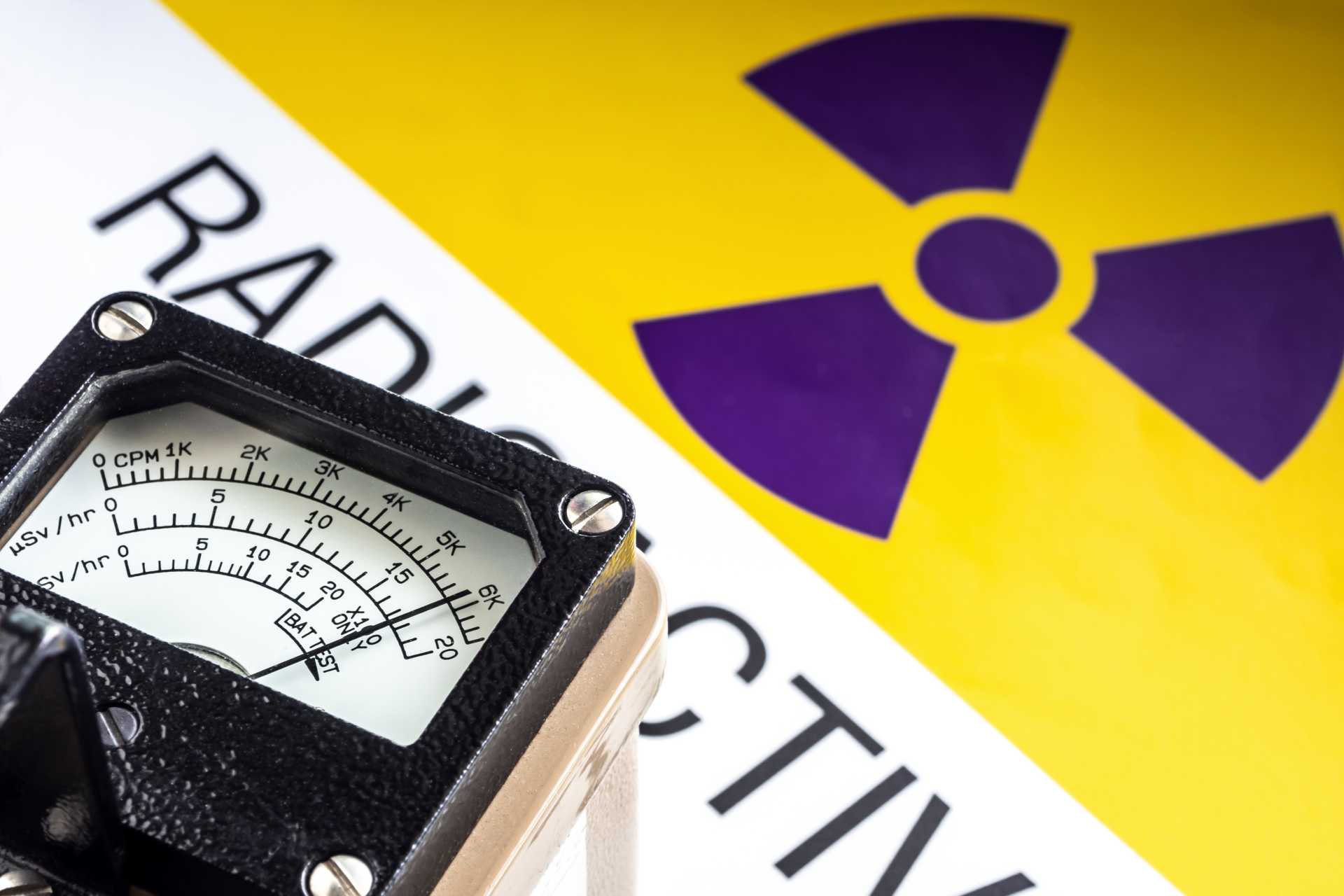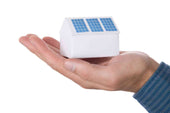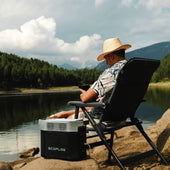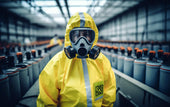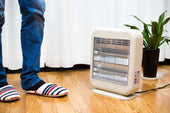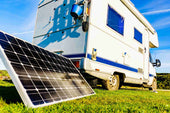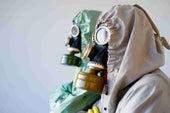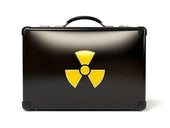Radiation, an energy source that can be man-made or derived from the environment, is present in every activity. Understanding these sources empowers us to control our environment and our health.
Medical therapies such as X-rays, industrial activities, and even electricity from nuclear facilities are additional outside radiation sources. This form of energy is transferred in two ways: as an electromagnetic wave or as a particle. It can be natural or artificial, but it usually comes from the unstable nuclei of atoms in materials like uranium, thorium, and radon gas in the earth’s crust.
Nuclear plants and some medical activities remain very few examples of sites where artificial radiation sources are present.
Not all types of radiation pose health effects; however, exposure to massive amounts of some, especially ionization radiation, including alpha, beta, gamma, and even neutrons, harms one's health.
Importance of Radiation Detection at Home
For many reasons, a person might be interested in checking the level of a particular type of radiation in their house.
If you live close to nuclear power plants, your residence could be at greater risk of being hit by an accident or leakage of radioactive materials. The same goes for living in a region with high radon gas concentrations, where health safety monitoring is necessary.
This is because continued exposure to high amounts of radiation may result in possible cancer development, radiation illness, and damage to the DNA, which may be responsible for congenital disabilities.
Even in occupational settings that handle radioactive substances, defense against radiation becomes critical. These are services like medicine, mining, or nuclear power. Even ordinary objects at home have low radiation levels, and learning how to handle it and where to get it can help overcome some needless health risks.
One way of mitigating this is to use appropriate measures to ensure good inside air quality, block the foundation cracks, and build radon’s radon-opposed construction.
Thanks to technological advancements, monitoring radiation levels in your home is now more feasible than ever. With the right radiation detection gadgets, the head of the household can easily take charge of their surroundings.
Homeowners have various radiation detection devices, such as Geiger counters, dosimeters, and radon-detecting appliances. These tools can effectively monitor and control the safety of their home environment.
Understanding Radioactivity
Radioactivity can be described as a trait of certain atomic nuclei that lose energy by emitting nuclear radiation. Atomic radiation occurs when certain elements decompose, giving off tiny particles or electromagnetic radiation.

Such radiation can be classified into four common radiation types that are likely to cause headaches to radiology personnel or patients:
-
Alpha Radiation: Alpha particles are like helium atoms made of two protons and neutrons. They are physically large and can even be stopped by thin sheets of paper or the outer surface of the human skin. However, they become very harmful when they are breathed or swallowed, as they can break the internal cells.
-
Beta Radiation: Beta particles are fast-moving, high-energy electrons or positrons. They are less penetrating than alpha particles; aluminum foil or clothing will prevent them. The lethal effects of beta radiation are degenerative skin burns that worsen if beta particles enter the living body.
-
Gamma Radiation is a very energetic form of high-energy electromagnetic radiation. Unlike alpha and beta particles, gamma rays easily pass through most materials, including the human body. Thick materials such as lead and concrete would be required to shield and protect against gamma radiation. Among all the various types of radiation, this one is very damaging to people because it penetrates the inner body tissues and organs.
-
Neutron Radiation—Neutrons have a neutral charge and can penetrate more than alpha, beta, or gamma radiation. They are primarily known near nuclear reactors and in some industrial processes. Protection against neutron radiation requires using hydrogen-rich materials like water or concrete.
Common Radiation Sources Found At Home
Common household items release several low radiation emissions into the environment, which may not be a happy discovery for many.
However, those sources are usually not harmful, putting homeowners at ease regarding the safety of their houses.
-
Smoke Detectors: A device that detects smoke includes a small portion of the radioactive americium-241 in many smoke detectors. Alpha particles that Americium emits are only limited to the detector; it cannot be safely an excavator yourself. That may lead you to this material, but device exposure is risky.
-
Ceramic Tiles and Pottery: Ceramics, especially older ones, may have uranium glazes that give off radiation, but in very small amounts. These items are safe but will elevate your house's background radiation.
-
Radon Gas: Radon is an environmentally radioactive gas that forms naturally in soil and sometimes seeps into the house. It is widespread in houses built on uranium-rich soil. Radon gas is the second leading cause of lung cancer after smoking, so it is essential to check for radon in your houses.
-
Cosmic Rays: Planetary rays from outer space pass through the Earth's atmosphere and reach the land daily. Even at sea level, these rays add up to background radiation. Since there is less atmosphere, people living at high altitudes may be slightly more exposed to cosmic rays.
Types of Radiation Detectors
Portable radiation detectors have gained popularity, and there are various types to choose from. Below are the main types found on household premises.

Geiger-Müller Counters
The Geiger-Muller counter, or Geiger counter, as it is popularly known, is the most familiar instrument for radiation detection. The device uses a gas-filled tube to detect ionizing particles such as alpha, beta, and gamma radiation.
As radiation enters a Geiger counter unit's tube, it ionizes a gas, creating an electrical pulse that is then measurable. The unit's display combines this pulse, giving the user the ambient radiation in a particular area.
Why use a Geiger counter?
Geiger counters' user-friendly design and built-in systems make them highly responsive to ionizing radiation, making them suitable for home use. Whether you need to check radiation levels in household items, measure ambient radiation, or detect radon gas, Geiger counters are simple and effective tools for measuring ionizing radiation.
Affordability:
Geiger counters are cheap, easy to operate, and suitable for anyone without special training. Portable devices, such as the MIRA Safety Geiger-2 Portable Dosimeter, can be used around the house and help quickly assess radiation dosages in a household or workplace.
Scintillation Counters
Scintillation counters work differently from Geiger counters. They employ a special radiation-sensitive material that produces a soft light when ionizing radiation. This light is changed into an electric charge, and the detected radiation is registered later.
Dosimeters
Dosimeters, which can be worn on the body, are crucial for assessing exposure to ionizing radiation over a specific period. They are particularly important in occupational settings where individuals risk radiation exposure, such as healthcare, nuclear plants, or research laboratories. Dosimeters provide a cumulative radiation exposure record.
Radon Detectors
Radon gas, the second leading cause of lung cancer and is odorless, can accumulate in your home's atmosphere. This makes radon detectors crucial, especially in areas where radon is common.
How to Use a Radiation Detector at Home

Using a radiation detector at home is relatively simple, but proper handling is essential for accurate readings.
Follow these guidelines to ensure your radiation detector works effectively:
-
Read the User Manual: Each detector has its operational nuances, so it's important to follow the manufacturer's instructions carefully. This helps avoid user error and ensures accurate results.
-
Avoid Electronic Interference: Keep the detector away from electronic devices that may interfere with its readings. Mobile phones, microwaves, and other household electronics can sometimes affect the sensitivity of radiation detectors.
-
Check Power Supply: Before starting any tests, ensure your detector is fully charged or has fresh batteries. A low-power detector might give inconsistent or inaccurate readings.
-
Use Protective Gear When Necessary: If you suspect that an item or area is highly radioactive, wear protective gloves and a mask to minimize direct exposure, even though most detectors are designed to keep you safe at a distance.
Step-by-Step Instructions
Here's a guide to detecting radiation using two of the most common types of detectors—Geiger counters and radon detectors:
Using a Geiger Counter:
-
Turn on the Device: Switch on your Geiger counter and allow it to calibrate. Most models will automatically adjust to the local background radiation levels.
-
Select the Measurement Mode: If your Geiger counter allows it, choose the type of radiation you want to measure—alpha, beta, or gamma.
-
Scan Your Home: Slowly move around your home, paying close attention to areas where radiation might accumulate, such as basements, older household items, or areas near electronic appliances.
-
Monitor the Display: As you walk, watch the display for spikes in radiation. Some models emit clicking or beeping noise if they detect higher radiation levels.
-
Record Results: If you encounter higher-than-usual levels, note the readings and consider contacting a professional to investigate further.
Using a Radon Detector:
-
Place the detector Correctly: Set up your radon detector in the lowest level of your home, such as the basement, where radon gas tends to accumulate.
-
Allow for Testing Time: If you're using a short-term or long-term detector, leave it in place for the designated period (usually several days for short-term tests or months for long-term tests).
-
Check the Readings: Once the testing period is over, review the radon levels indicated by the device. If levels exceed 4 pCi/L (picocuries per liter), you'll need to mitigate the radon gas in your home.
Interpreting Results
Once you've taken readings with your radiation detector, it's essential to interpret the data correctly.
-
Background Radiation: Natural background radiation varies from place to place, but it generally ranges between 0.05 and 0.2 microsieverts per hour (µSv/h), which is considered safe.
-
Elevated Readings: If your Geiger counter or radon detector shows readings above the normal range, don't panic. It's important to verify the source of the radiation. In the case of radon, if levels exceed 4 pCi/L, you should take action immediately to reduce exposure.
If readings show significant spikes in radiation beyond background levels, consider contacting a radiation safety expert for further investigation and remediation advice.
What are the specific health risks associated with prolonged exposure to radiation at home?
Staying in radiation for quite a while can incur risks irrespective of the dose, even in patients with lesions or potential hazards. Potential hazards attributed to high doses of ionizing radiation also lead to diseases such as cancer, among others.
Let us look at the critical health risks that are involved with such exposure:
1. Increased Cancer Risk
The risk of prolonged exposure, as in the case of long-term radon concentrations or high ionizing radiation such as from gamma and x-rays, is the development of cancer. This happens because radiation harms cells as it can lead to DNA breaks, which leads to changes that can promote cancer development. One such incident is due to radon, which is nonsmoking, the second cause of lung cancer. Exposure of patients and operators to other types of ionizing radiation over an extended period can also predispose them to skin cancer, thyroid cancer, and even leukemia.
2. Radiation Sickness
Individuals who receive a sudden and high amount of radiation are likely to experience acute radiation syndrome, commonly referred to as radiation sickness. In most cases, this requires exposure to doses much higher than those available in domestic environments. Still, it is possible under conditions of a nuclear accident or exposure to a very radioactive source. Symptoms include nausea and vomiting, loss of hair, lowered body resistance to infections, and sometimes more severe cases that can lead to death.
3. Genetic Mutations
It's crucial to understand that radiation affects the individual exposed and their future children. The genetic damage caused by ionizing radiation can be passed on, creating a two-generational risk. This could mean a child born to such parents might have a congenital disability or be more susceptible to certain diseases than a healthy child.
4. Cardiovascular and Cataract Risks
While the danger of cancer from radiation exposure is well-known, it's important also to consider the risks of cardiovascular disease. Prolonged exposure to high levels of radiation can lead to heart diseases and associated conditions. Additionally, radiation can cause cataracts in the eye, potentially leading to vision loss.
5. Respiratory Issues
Among the outcomes of radon exposure cases, inhalation of radon gas and its inhaled progeny can contact the lung tissues. Over time, this can give rise to health effects such as chronic cough, breathlessness, and lung cancer, mainly among smokers.
Safety Measures for Handling Radiation

What to Do if High Radiation Levels Are Detected
In case your radiation detection device shows increased levels of radiation within your house, the first thing you need to do is guarantee the safety of yourself and your loved ones’ health:
-
Leave the Affected Area: If possible, leave the affected area, specifically if the radiation levels are extremely high.
-
Ventilate the Space: Open windows and use fans to bring fresh air into the room. This is very important in lowering the amount of radon gas in the affected buildings.
-
Seek Professional Help: If radiation levels in your environment are very high and you feel the experts you are contacting need to be more skilled to handle the exposure, feel free to contact the authorities. They are trained to handle such situations and will provide the necessary guidance and support.
Long-Term Solutions for Radiation Protection
Radon systems:
Effective Radon Mitigation: if you discover elevated levels of radon gas in your home, setting up a radon mitigation system is a highly effective solution. These systems enhance airflow, especially in basements and crawl spaces, and fill up foundation cracks that are pathways for radon. The radon removal systems are efficient and significantly reduce the dangers of prolonged radon exposure, providing security and protection.
Managing Shielding of the Home:
If you work or live near a nuclear power station or in a setting with higher natural background levels, consider increasing the shielding of your home. This could encompass using inferior building elements such as thick walls or special materials that shield against radiation. Upgrading the system within your house would also decrease the amount of airborne dust contaminated with radon and volatile radioactive materials.
Conclusion
While radiation is invisible, it can be present in our homes. This underscores the crucial role of radiation detection in maintaining a safe living environment.
Even though there is little or no radiation, a commitment to finding ways to measure it helps reduce the chances of exposure to human health hazards.
Radiation is vital for people's well-being and health, whether they need to monitor radon gas, are near a nuclear installation, or want to improve the safety of their household environment.
Tools Available for Home Use

Fortunately, radiation detection systems' cost and usability have become relatively inexpensive.
There is a Geiger Meter—MIRA Safety Geiger-2 Portable Dosimeter—which is everywhere within your reach and makes a great addition to monitoring occupational and personal radiation exposure. The device is lightweight, simple to operate, and provides accurate feedback about the radiation weather, assisting you in making appropriate decisions and actions.
Radiation can be detected and managed in our homes with the right tools and information. When coupled with action, this knowledge can transform a home from a potential radiation source into a haven for its residents.

